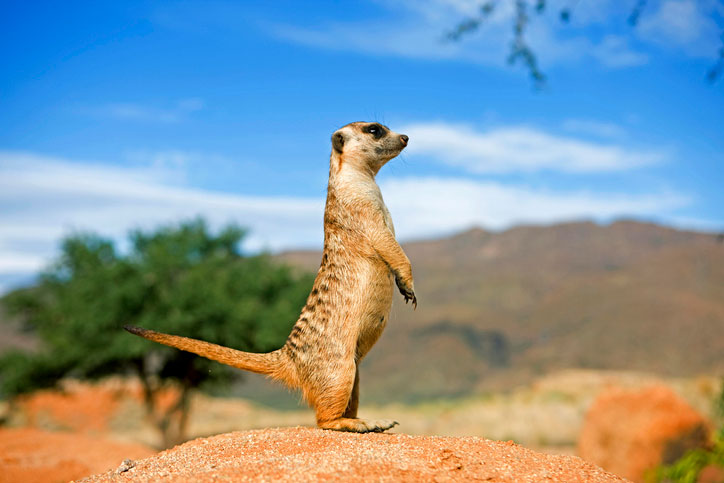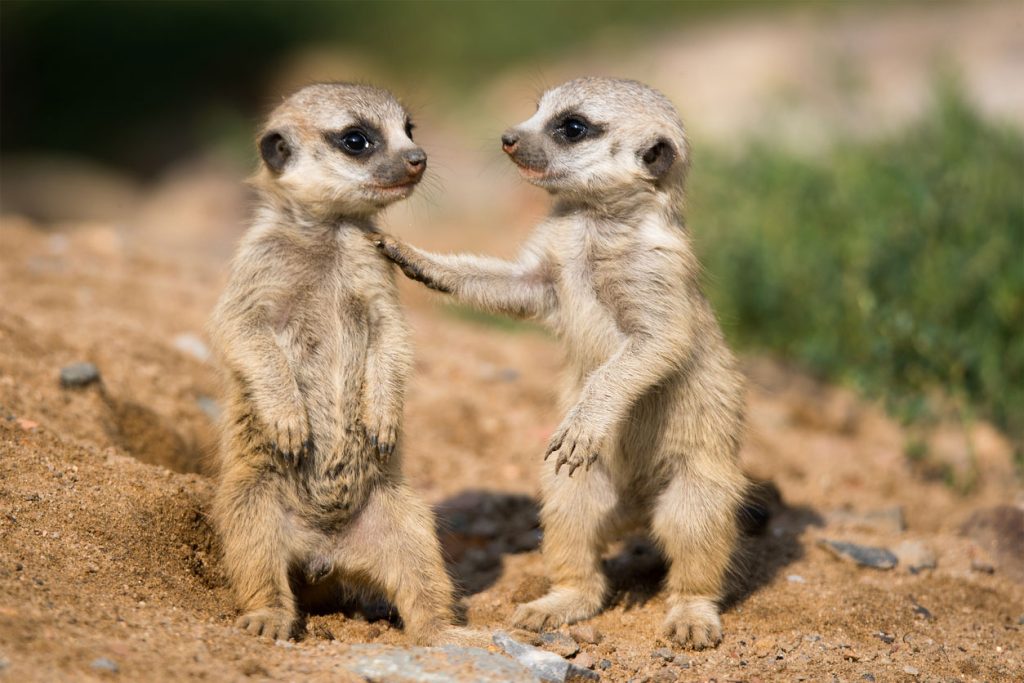Scientific Name
Suricata suricatta
Description
Also known as suricate, the Meerkat is a relative of the mongoose family that is found in Southern Africa. It’s a small animal that is characterized by a narrow pointed muzzle with dark rings surrounding its eyes. It has a broad head with black ears which are hardly visible. The Meerkat also features some dark stripes on various parts of its body like back, shoulders, and the tail.
It has a white underbelly with a brown tail packed with a tuft of black fur at the tip. The average full body length of a Meerkat is between 10 to 14 inches with a long tail measuring approximately 9 inches and a 5.5 lbs average body weight.
The Meerkat is well known for standing up in an upright position when looking out for predators. Meerkats also have the ability to close their ears in order to keep out sand.
Food
The primary diet for Meerkats consists of insects, spiders, and millipedes which they dig out of the ground. However, they also tend to consume small mammals, lizards, small snakes, birds, grubs, bird eggs, and others.
Habitat
Meerkats are mainly found in southern Africa, particularly in arid, open habitats with minimal woody vegetation. They live in rock crevices as well as large burrow systems in plains which can go as deep as 16 feet. Although they commonly dig out their own burrows, they tend to prefer using those dug by other animals.

Predators
Meerkats are commonly hunted by various predators like Jackals, Servals, Kaffir Cat, and other carnivores that dig them out of their deep burrows. Meerkats are also hunted by birds of prey like hawks, eagles, falcons, and vultures.
Social Structure
Meerkats are some of the most social animals in the world. They form packs consisting of between 2 to 30 individuals in a single colony, with each occupying homes measuring around 1.9 sq mi.
Because of their social nature, it’s not uncommon to find these small animals sharing their burrows with Ground Squirrels, Mongooses, and even other small rodents.
Considered eusocial, Meerkats perform a wide range of tasks based on an organized social structure. For example, each group consists of babysitters who care for and remain with the young ones inside the burrows while the hunters hunt and bring food to the young ones and the rest of the group. There are also Sentries that lookout for predators while teaching the young ones how to hunt. When attacked by a predator, a meerkat quickly digs up the ground to create a thick cloud of dust that distracts the predator. Another clever tactic they use to scare off the predator is by staging mock group attacks as well as fluffing out their fur.
Birth & Offspring
The gestation period of a Meerkat is 11 weeks, after which 2 to 7 cubs are born. Meerkat cubs are usually born hairless and blind. For a few days, the mothers feeds and cares for the cub in the burrow. But after two to four weeks, the young ones are ready to forage with the rest of the adults. Once they are old enough, the young Meerkats will leave the den and start their own colonies elsewhere.


Lydia King is a huge animal lover and has always been fascinated with learning about the animal kingdom. She enjoys writing about anything animal related from scientific information about rare species to animal references in pop culture.












